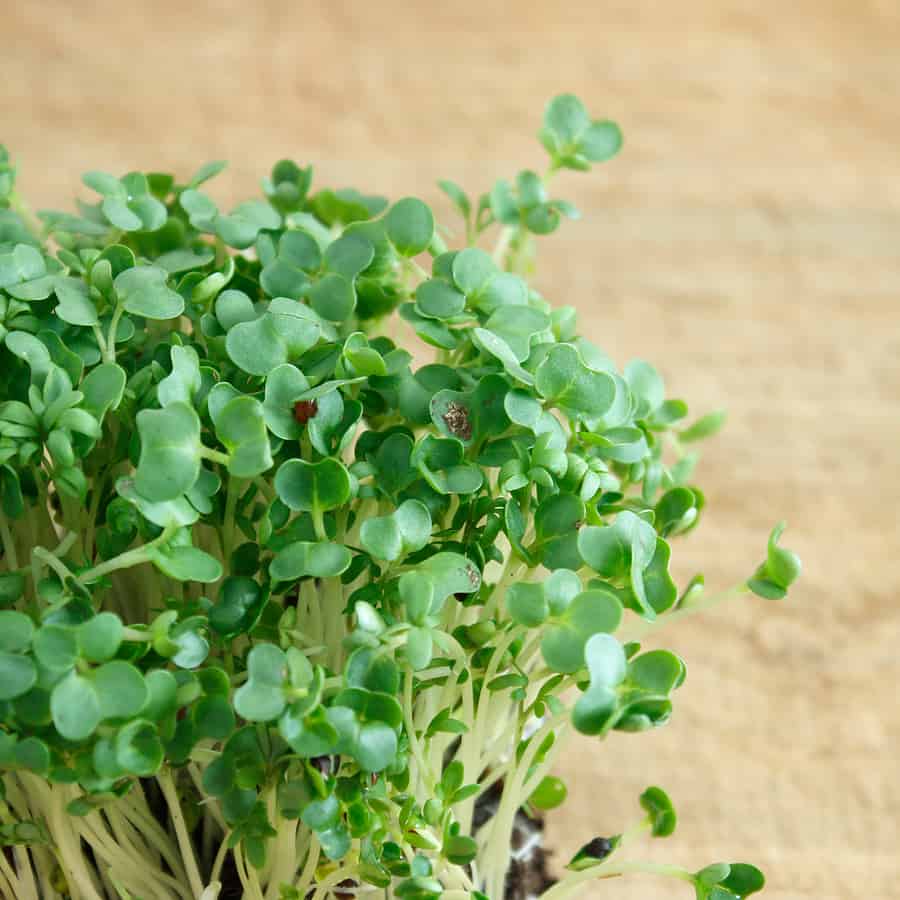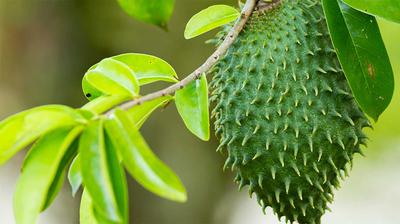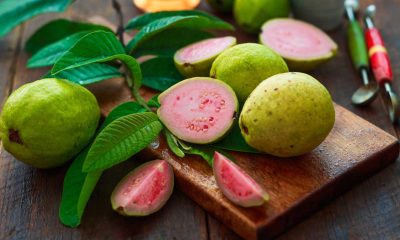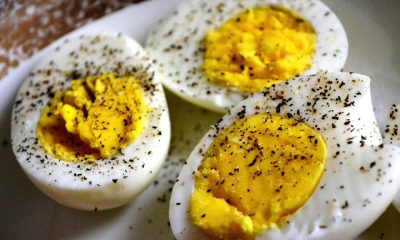Health
5 Benefits of Yohimbe bark and side effects

Table of Contents
Discover the 5 Benefits of yohimbe bark and side effects.
Yohimbe bark (pronounced yoh-heem-buh) is an herbal supplement associated with anti-aging effects.
It is used to naturally treat erectile dysfunction, low libido, hormonal imbalances, and symptoms such as low energy.
Yohimbe bark benefits have a long history of use in West Africa, where the plant originates, it still grows there today especially for its apparent aphrodisi bilities.
According to one report, yohimbe is the only herb listed for sexual function, to the Physician’s Desk Reference; it has earned the nickname “herbal viagra”; It has been used in certain medications, especially those indicated to treat sexual dysfunction, for more than 75 years.
It can also act as a mild hallucinogen, causing neurological reactions that can be very varied.
This plant is currently approved in the United States for the treatment of erectile dysfunction but has seen a resurgence in street use as an aphrodisiac and mild hallucinogen.
It has many names depending on how it is sold. These include Yohimbe, Yocon, Yohimex, Johime, Aphrodite, and Corynne.
Do any Yohimbe supplements work to help treat sexual problems like impotence or other conditions? The results of the study have been somewhat mixed.
But there is some evidence that they can help these conditions. It is especially useful when combined with other substances that promote better flow and higher energy levels, such as L-arginine.
Benefits of yohimbe Bark
1.- It can help treat erectile dysfunction
Yohimbe bark is commonly taken to increase sexual arousal and to reduce sexual problems, such as symptoms of erectile dysfunction (ED), also called impotence.
Research shows that Yohimbe bark may be able to increase blood flow to the penis or vagina; it also increases nerve impulses that play a role in orgasm; Due to the way yohimbine affects blood vessels, it can cause penile tissue relaxation and blood swelling.
This helps a man maintain an erection. These effects are beneficial to both genders when it comes to experiencing sexual satisfaction.
There have only been a few well-controlled studies evaluating the effects of herbal (as opposed to the drug) Yohimbe in humans.
There is some evidence that yohimbine has the potential to enhance the nitric oxide pathway, which helps bring blood flow to the penile tissue of the corpus cavernosum.
It can also stimulate the pelvic nerve ganglia and increase the supply of adrenaline to the nerve endings.
It seems to have the most effects overall when combined with other treatments or herbal remedies.
A study evaluating the effects of Yohimbe bark on erectile dysfunction found that those who took the herbal remedy experienced slight benefits compared to a control group not taking the supplement.
Overall, studies have been inconclusive about the aphrodisiac benefits of taking yohimbine supplements. However, most have found that it works better than placebos.
A recent analysis of seven trials concluded that between 34-75 percent of men in studies experienced favorable results when taking between 5 and 10 milligrams.
2.- It can help reduce the side effects of some medications
Some people experience symptoms of sexual dysfunction, such as erectile dysfunction or loss of interest in sex, when they take medications for depression or anxiety disorders called selective serotonin reuptake inhibitors (SSRIs).
Medications containing yohimbine are not intended to treat these symptoms, however, some doctors use yohimbine to offset the negative effects of treating mental illness.
It can also decrease lethargy or low blood pressure as it acts as a mild stimulant. Additionally, it can help prevent complications in diabetic patients, including diabetic neuropathy.
3.- It can help treat blood pressure problems
As an alpha-2 antagonist, yohimbine promotes sympathetic activity. According to several studies, the benefits of Yohimbe bark can increase blood pressure.
That’s why it’s useful for things like erectile dysfunction or diabetic nerve problems; It is sometimes used to treat low blood pressure and symptoms such as dizziness when standing up.
It works by dilating blood vessels and acting on the sympathetic nervous system. However, it’s important to note that increased blood pressure can also be a problem for some people, especially those with existing cardiovascular problems, people taking blood pressure medications, or those who already have high blood pressure.
Study results have been mixed on possible side effects of yohimbine, but it appears that in moderate doses it generally won’t raise your heart rate too much, cause very high blood pressure, or contribute to anxiety, as long as it’s not combined with other stimulants.
4.- It can help increase performance and alertness
Products containing Yohimbe bark are sometimes used by athletes or dieters to help promote easier weight loss, especially of body fat, and to increase energy expenditure.
In addition to this, it is believed that it can increase muscle mass and repower endurance by cutting body fat, however, there is little evidence of this, even so, the benefits of Yohimbe bark have some potential in energy consumption because it acts as a stimulant by raising adrenaline levels throughout the body, that is, it can prevent the fatigue that occurs after an exercise routine.
According to an in-depth investigation that evaluated the supplementation of yohimbine bark, especially in the composition of the body and the performance of certain athletes when executing certain sports routines, it was found that the percentage of both fat and body mass of each one of them decreased significantly compared to another group that was treated with a different placebo.
That is, yohimbine nutrition did not significantly alter body mass, fat, or performance indicators.
Similarly, people who regularly take Yohimbe bark have been found to have the ability to increase their energy levels and alertness; but, be careful, if you consume too much, you may experience episodes of anxiety and restlessness.
5.- It can have a positive impact on the symptoms of depression
Studies have found that as an alpha 2 antagonist, yohimbine has properties that may help increase dopamine levels in the brain when used alone or in combination with other antidepressant treatments, such as the drug fluoxetine.
Yohimbine also helps increase levels of the coenzyme NAD (or nicotinamide adenine dinucleotide). This affects metabolism, cognitive processes, and drug detoxification in the body.
NAD is not currently used to treat cognitive or mood-related disorders on its own, but it has been shown in some studies that it could be used to prevent neurodegenerative diseases such as Parkinson’s disease or Alzheimer’s.
However, on the other hand, studies have found that because it can increase anxiety in some patients, yohimbine may worsen mental illness in some patients, including Parkinson’s patients.
For this reason, it is important for anyone taking mood-altering medications or who has a history of any mood or cognitive disorders to work with a professional while taking or starting a new herbal treatment.
Precautions and Side Effects on Yohimbe Bark Benefits
People who do not have contraindications (see below) generally tolerate it well. However, taking Yohimbe can sometimes cause side effects including high blood pressure, headaches, anxiety, restlessness/nervousness, dizziness, or tremors.
These side effects seem to affect people with a history of mental illness or mood-related problems more often. But they can develop in anyone.
Yohimbe bark can interact with various drugs and medications, making it not safe for everyone to use.
Do not take Yohimbe bark if you are currently taking any ACE inhibitor, beta-blocker, SSRI medication, MAOI, stimulant or caffeine-containing medication, or tricyclic antidepressant medication.
Those who have any of the conditions listed below should not take herbal treatments such as Yohimbe without first talking to a doctor.
This is because it can affect things like blood pressure, heart health, kidney function, and neurotransmitter functions:
•Renal disease
•Hypertension
•Angina
•gastric ulcers
•Prostatitis
•Bipolar disorder, anxiety disorders, schizophrenia, or suicidality
For children or women who are pregnant or breastfeeding, it is not safe to take Yohimbe. Little research has been done to assess its effects in these populations.
Yohimbe Bark Nutritional Background
The main active ingredient found in Yohimbe bark is the alkaloid yohimbine (hence its name!). This can also be called alpha-yohimbine or all-yohimbine.
In the United States, certain prescription medications containing yohimbine have been approved since the 1980s. They are labeled as yohimbine hydrochloride (which is known by the trade names Aphrodyne or Yocon).
Yohimbine medications are most often prescribed to treat sexual dysfunction in men and women caused by several factors such as aging, hormonal imbalances, or medication side effects.
Some studies suggest that alpha 2 antagonists may help improve patients’ response to antidepressant medications; it has a chemical structure that is similar to various medications, and even recreational drugs, that are used to control conditions such as mood-related disorders such as depression or schizophrenia, low libido, dizziness due to low blood pressure, and others.
One of these medications is called reserpine, a type of indole alkaloid that is prescribed as an antipsychotic and antihypertensive drug. Another is lysergic acid (also known as LSD), which has much stronger psychological/psychedelic effects.
While yohimbine doesn’t have psychedelic effects, according to research findings, it does affect neurotransmitters, including dopamine, adrenaline, and serotonin. It also seems to help some people who suffer from symptoms due to mental illness.
How to find yohimbe bark?
Look for Yohimbe in capsule/tablet form at health food stores or online. It is rare to find the actual bark or extract form, although it may be possible.
Dosage recommendations for Yohimbe depend on its use. Doses should ideally be adjusted based on body weight and sometimes gender.
There is some concern that supplements labeled Yohimbe contain different amounts of active ingredients than the amount listed.
The FDA strictly regulates prescriptions containing yohimbine, but not supplements. It can be difficult to accurately determine the amount of active yohimbine in supplements due to how different growth and distribution variables affect concentration.
These variables can include: the exact type of Yohimbe tree bark being used, where on the tree the bark is harvested from, the maturity of the tree, how fresh the bark is, the processing techniques used to create supplements, and how the supplements are shipped/exported and warehoused.
Final Thoughts
Yohimbe bark is an herbal supplement. Its species name is Pausinystalia Yohimbe. It is also used to make certain medications.
Yohimbine is the active ingredient in yohimbe bark. Its benefits include raising blood energy, treating erectile dysfunction, increasing energy, aiding fat loss, and altering mood.
It is not safe to use in combination with other stimulants (such as caffeine) or when taking medications for heart disease, liver or kidney dysfunction, or depression and/or anxiety.
Health
15 good reasons to drink lemon juice in the morning on an empty stomach

Discover the 15 good reasons to drink lemon juice in the morning on an empty stomach.
Lemon is one of the most frequently and widely used citrus fruits.
Its popularity is due to its scent and refreshing taste.
Its aroma makes it an ingredient of choice in many recipes and the composition of perfumes.
It also accompanies a large number of drinks, including tea and cocktails, it can also be served as fruit juice.
Not only is lemon used for its aromatic qualities, but also its therapeutic dimension.
Rich in vitamin C, lemon indeed has formidable therapeutic virtues: its Antiviral and antibacterial properties as well as its ability to stimulate the immune system are widely recognized.
One of the most common ways to reap the benefits of lemon is by squeezing the juice.
Lemon juice stimulates digestion and has a detoxifying action.
It also promotes drainage of the liver and thus improves digestion.
By its ability to boost metabolism, lemon juice is an effective way to lose weight.
If you want to lose weight, drinking lemon juice in lukewarm water every morning on an empty stomach gives fabulous results.
But that’s not all, nutrition specialists at the Edison Institute of Nutrition have compiled a list of the main benefits of consuming lemon juice mixed with lukewarm water on an empty stomach:
1. An excellent source of vitamin C, lemon juice protects the body by strengthening the immune system.
2. Drinking lemon juice in lukewarm water every morning on an empty stomach helps maintain pH balance in the body.
3. Thanks to its antibacterial properties, lemon juice helps fight infections.
4. Has a detoxifying action.
5. Promotes digestion.
6. Besides vitamin C, lemon is also an excellent source of potassium, calcium, phosphorus, magnesium, etc.
7. Helps fight colds.
8. Lemon water is a well-known remedy for dealing with different skin problems like acne, rashes, wrinkles, or dark spots.
9. Mixed with lukewarm water, lemon juice stimulates digestion, boosts metabolism, and thus allows you to lose weight quickly.
10 Lemon juice is also very effective in removing toxins that have accumulated in the liver.
11. The anti-inflammatory properties of lemon help fight infections of the respiratory tract, sore throat, and inflammation of the tonsils.
12. Rich in electrolytes, lemon juice effectively hydrates the body.
13. Drinking lemon juice mixed with lukewarm water decreases muscle and joint pain.
14. Lemon juice in lukewarm water promotes good dental hygiene because it helps decrease dental pain and prevent gingivitis.
15. Drinking lemon juice in lukewarm water stimulates digestion and regulates intestinal transit.
SOME QUESTIONS / ANSWERS AND COMMENTS :
Q. Out of curiosity… my cousin is allergic to lemon. Does lime have the same virtues?
A. Yes, you can substitute lemon for lime.
I had to stop drinking lemon water for a month because I was sick. The joint pain I got rid of before all came back.
So I started drinking lemon juice in lukewarm water again every morning on an empty stomach.
Now after a week, and it’s true, my pain in my knees is gone !!!!
It’s amazing! Lemon is indeed very alkalizing and promotes the elimination of acids.
Also, it contains a lot of vitamin C, which is good for the joints.
Some people suffer from vitamin C deficiency and need to be sure to find it in their diet or supplements.
Q. After drinking lemon juice in lukewarm water in the morning on an empty stomach, how long should I wait to eat?
A. I recommend that you wait 20 to 30 minutes before eating.
Q. Why does lemon juice need to be mixed with lukewarm water? Is lemon juice also beneficial in cold water?
A. Lukewarm water stimulates digestion and the liver.
Coldwater does the opposite, it blocks digestion.
So it is best to consume lemon juice in lukewarm water.
Q. How many lemons should you squeeze in the morning to benefit from the benefits of this fruit?
A. I suggest squeezing half a lemon in a large glass of lukewarm water (25cl).
Lemon juice is rich in vitamin C and antioxidants.
Citric acid and vitamin C promote the dissolution of gallstones, their elimination, as well as the clearing of the bile ducts.
Lemon juice has been used for centuries in the treatment of kidney stones and gallstones.
Lemon also has antimicrobial properties that help reduce gallbladder infections and relieve pain.
The pectin in lemon juice relieves bloating, nausea and pain.
Besides, lemon juice helps reduce the production of cholesterol by the liver.
Q. Hello. I have a question: I have thyroid problems, can I drink lemon juice in lukewarm water?
A. Yes. You can drink lemon juice in lukewarm water if you are suffering from thyroid problems.
Q. I take medicine on an empty stomach every morning for a thyroid problem. Should I take this medicine before drinking lemon water or after?
A. Since lemon water is absorbed relatively quickly by the body, I recommend that you take your medicine soon after drinking the lemon water.
Joint pain is associated with poor digestion and allergic reactions to certain foods.
Lemon water promotes digestion and the elimination of toxins.
If your teeth are prone to demineralization and are very sensitive, I advise you to drink lemon water through a straw.
Health
Mosquito bite: The Miracle Cure Against It

Discover The Miracle Cure Against Mosquito Bite.
Have you been bitten by a mosquito again?
They have the gift of stinging us when we spend a quiet evening on the terrace!
And then, hello the itching!
We only want one thing, and that is to scratch ourselves to the point of blood. It’s super annoying!
Fortunately, my grandmother gave me her natural remedy to quickly relieve a mosquito bite.
The miracle trick is to apply a paste of baking soda and witch hazel water. Look :
What you need
- baking soda
- witch hazel water
- cup
How to do
- Put three teaspoons of baking soda in a cup.
- Pour a teaspoon of witch hazel water
- Mix to obtain a paste.
- Apply the paste to the bite.
- Leave on.
Results
And there you have it, thanks to this remedy, you have stopped the itching of mosquito bites in their tracks 🙂
Easy, fast, and efficient, isn’t it?
It is a simple treatment that makes the sting deflate and disappear quickly!
This remedy is completely natural and very gentle. It is ideal for the fragile skin of children and babies.
And you don’t even need Apaisyl cream … it’s much more economical that way.
In addition, it works for all insect bites: mosquitoes, spiders, horseflies…
Why does it work?
Baking soda soothes the itchiness. It acts as an antiseptic and disinfectant. It thus calms the inflammation caused by the sting.
Witch hazel water also disinfects the sting and soothes the itchy sensation.
It also refreshes the skin and heals the irritated part thus bringing an immediate feeling of well-being.
We also find witch hazel in the composition of calming gels after insect bites from Hansaplast.
What is witch hazel?
Witch hazel is a plant native to North America.
Witch hazel water comes from the indirect distillation of dried witch hazel leaves. It takes about 60 kilos of leaves to get a thousand liters of water.
The many benefits of witch hazel have been recognized for a very long time.
It helps disinfect wounds. Applied in massage, it is an effective venous tonic and stimulates blood circulation.
It also has anti-inflammatory properties and as such, it relieves rheumatic and arthritis pain.
It is also an asset in your beauty kit. Used in rinsing water, it eliminates dandruff.
Finally, it is also found in perfumery, because its smell is very pleasant. It is similar to that of cut grass with a hint of mint in addition.
Health
17 Benefits of Garden Cress You Never Dreamed of

Table of Contents
-

 Benefits4 months ago
Benefits4 months agoThe Benefits of Joining Gym Lumolog – Improve Your Fitness & Health
-

 Food1 year ago
Food1 year ago10 + Benefits of carrot juice and side effects
-

 Health1 year ago
Health1 year ago50 Super Healthy (And Very Often Cheap) Foods
-

 Health1 year ago
Health1 year ago5 Shocking health benefits of kinkeliba and side effects
-

 Health1 year ago
Health1 year ago15 health benefits of soursop leaves tea and side effects
-

 Food1 year ago
Food1 year ago8 shocking benefits of leek juice and side effects
-

 Health1 year ago
Health1 year ago15 Benefits of lipton tea and side effects
-

 Health1 year ago
Health1 year agoBenefits of guava leaves Sensually












